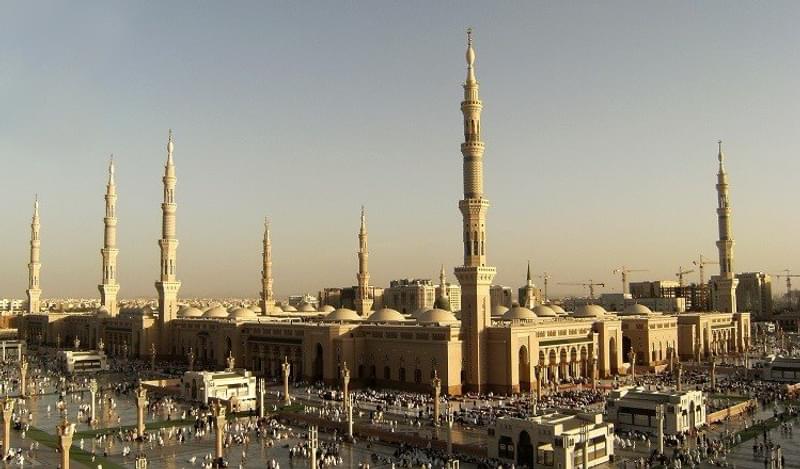As the global economy waits for the outcome of a make-or-break November meeting of the OPEC members in Vienna, speculation of a principal agreement to lower collective output levels by around 700,000 barrels a day briefly rallied the markets on Wednesday last week.
An initial rise of oil prices by about 7% did not last however, and by Friday the negative dynamic returned amid scepticism among investors. Doubts remain not only about the willingness of participants to honour the terms of a potential deal, but also the level of involvement of other key players - in particular little is stopping Russia and US shale producers from using this opportunity to widen their margins.
“In terms of economy, it wouldn’t be a big game-changer,” concluded Jason Tuvey, Middle East economist at Capital Economics. “The oil prices are not likely to be affected strongly – it is a very small cut, even if agreed. The purpose of the meeting is more to show that OPEC is still relevant to the market.”
The Kingdom’s gamble so far hasn’t paid off, with their competitors appearing to be sturdier than expected and the prolonged period of depressed prices now taking a toll on the Saudi economy.
The Tadawul index experienced heightened levels of volatility last week, sinking 7.1% on Wednesday – its lowest point since the beginning of the year. Fears of an OPEC u-turn were compounded by news of the 9/11 bill’s passing in the US, potentially implicating Saudi royal family members and making the government vulnerable to costly lawsuits.
With a budget deficit of nearly US$100bn last year – the widest since 1991 - and Brent Crude expected to stay at current levels for the foreseeable future, Riyadh seems to have little choice but to continue efforts to wean the economy off oil.
Successful examples of such diversification programmes are few and far between, while many have ended in failure. If the deputy crown prince Mohammed bin Salman’s ambitious 2030 Vision plan is to materialise, it will require around US$4trn worth of public and private investment, a report by McKinsey estimates. The Kingdom will also have to significantly trim the luxurious public spending programmes that provided its citizens with high income rates for decades.
Some of these reforms have already begun to take shape, as evident from the IMF’s recent praise of the government’s initiatives. These include shaving 20% off government officials’ salaries – a significant move considering they take up two-thirds of the employment market. It has also scaled back on bonuses, housing benefits and other perks.
Overall, the government plans to cut public spending from SAR975bn in 2015 to about SAR830bn this year. This followed an earlier move to reduce a range of government subsidies on power and water as well as increases to service charges.
"It's one more economic measure to balance spending. Of course people don't like it, but it's a sign of the times. It shows why it's important for the private sector and for Saudi GDP to diversify," Saudi analyst and editor of Al Arab News Jamal Khashoggi told Reuters.
But while reduced spending provides some relief, the real hope behind Vision 2030 is that it will bring foreign investment. After its launch in June, the Saudi Stock Exchange handed out licences to Citigroup, HSBC, Ashmore Group and a host of other major industry players.
As the country prepares to tap the international debt markets for the first time in a potentially record breaking deal, most of the returns will go towards covering the financing of its twin budget and current account deficits.
“The important question is not if Saudi will diversify, but how. We expect to see a shift towards refining industry, which would help to increase revenues. That would be a first step that would attract some interest from investors,” noted Tuvey.
But that will not be enough to sustain the multitrillion budget of the diversification programme.
The solution needs to be much grander in scale – such as if the state-owned giant Saudi Aramco goes through with the largest initial public offering in Wall Street history.
“IPOing Aramco and transferring its shares to the Public Investment Fund (PIF) will technically make investments the source of Saudi government revenue, not oil,” Deputy Crown Prince Mohammed bin Salman recently told Bloomberg. “What is left now is to diversify investments. So within 20 years, we will be an economy or state that doesn’t depend mainly on oil.”
The fund’s portfolio of foreign investments has been growing steadily in recent months, with the acquisition of South Korea’s Posco Engineering and Construction Co. and US$10bn promised to Russia’s Direct Investment Fund in July. Earlier this year it also purchased a US$3.5bn stake in Uber. PIF eventually hopes to raise its proportion of foreign investment, currently at 5%, to around 50%.
As part of the move towards diversification, one of the key challenges for Riyadh would be to shift the financial burden from the government and state-dependent industries towards the private sector, where it aims to create around 450,000 jobs by 2020.
Privatisation in other major sectors, such as education, insurance and healthcare, as well as higher taxes would allow the government to raise around US$100bn and attract investment to those segments of the economy. Real estate, mining and tourism are other areas with the potential to bring in foreign money.
Clearly, Vision 2030, and the National Transformation Programme (NTP) hold a lot of promise for Saudi Arabia’s future. The Kingdom is finally setting on a course to transform its economy and rid itself of its oil addiction. The question is, with prices not expected to return to anywhere near the US$100 per barrel mark of the golden years, is it already too late?









